Ancient India started around 1500 BC. to 500 BC, and their greatest innovations are still used today. From architecture to science, the adapted methods shape many aspects of modern society.
Just like any civilization, the beginning of India's history began in prehistoric times. Traced back to 400,000 200,000 to XNUMX XNUMX BCE, the discovery of cave paintings and stone tools shows the first signs of human activity. It provided details of living conditions and other information during this time period. It was great rulers who expanded their empires to what constitutes India today. On the other hand, there were also leaders who proved unable to maintain a kingdom. Religions and their practices were formed, which gave the ancient Indian society a transformed structure.
Changes made over time strengthened only the largest empires known in history.
The history of ancient civilization is just like any other. There were great rulers and malicious rulers. With wars and battles come victories and defeats. Society brought social classes. Old education laid the foundation for modern education.
All in all, just like every brand in history, we gain a greater understanding of the world.
Indus Valley Civilization
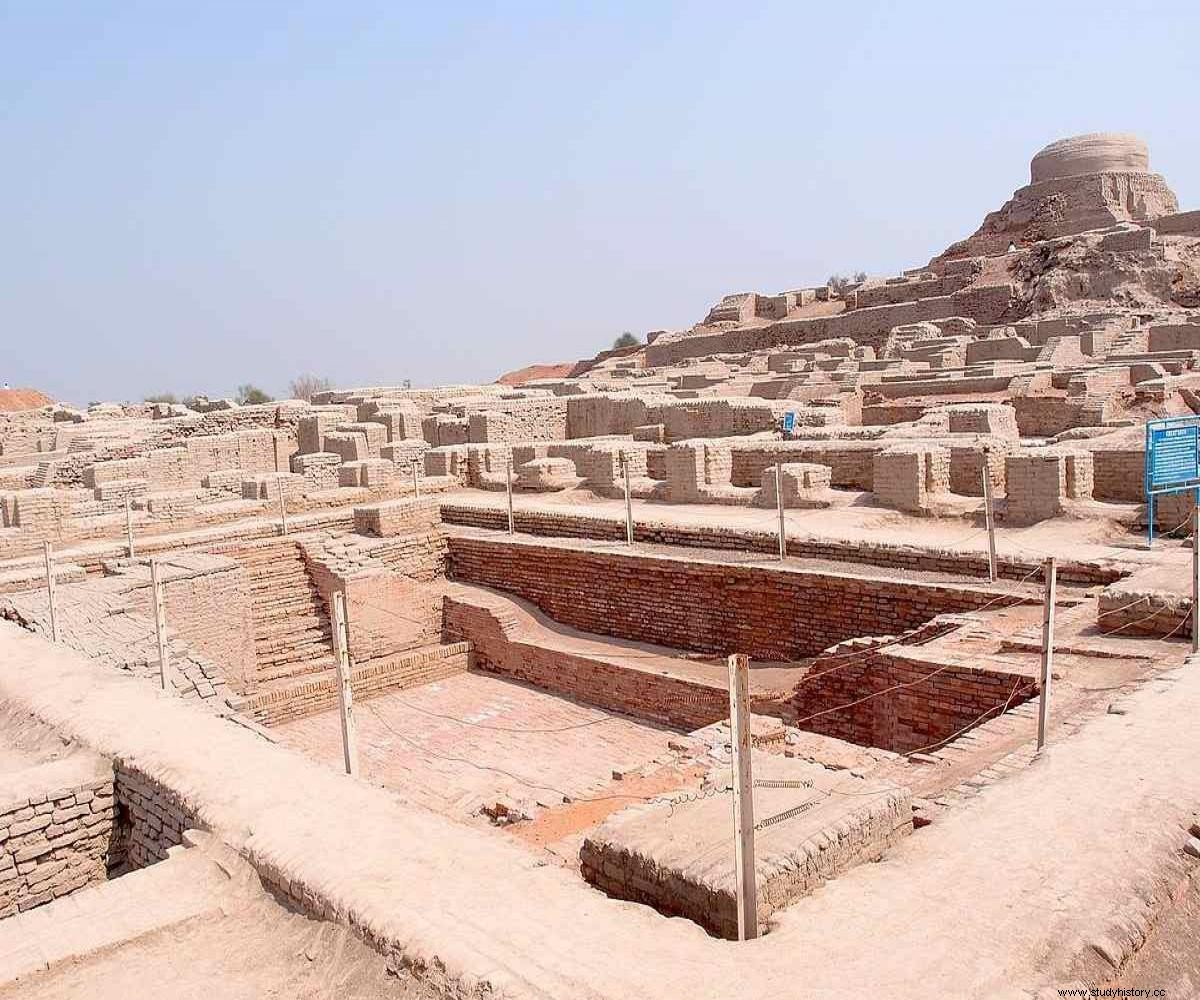
The earliest known urban Indian population was near the Indus River, and lasted between 3300 and 1300 BCE. Also known as 'Harappan', this civilization grew in three stages.
Early Harappan
Between 3300 and 2600 BCE, early settlers started farming communities and pastoral camps. Among their tasks were crop cultivation and livestock. Within these small communities, effective trade networks established connections with other settlements further afield. In addition, copper work became a form of technological progress.
In the last stages, they built large-walled settlements and expanded their trade network. Finally, the increasing integration of regional communities led to a material culture.
Eldre Harappan
From 2600 to 1900 BC, the early settlers developed into the Indus Valley Civilization. It became widely known as such at its future discovery.
The slow migration of monsoons allowed the villages to develop further. By taming the floods and their tributaries, they gained an abundance of agriculture. This helped with the development of cities. But without an irrigation system, farmers were dependent on monsoons and summer floods.
Over the years, the communities in Early Harappan became large urban cities. Further excavations showed that the early settlers had their own writing system, as well as the development of social and economic systems.
Sent Harappan
Although the civilization of the Indus Valley thrives on the natural elements, between 1,900 and 1,300 BCE, the early settlers declined slowly. The changes in building structure and production methods showed that another civilization inhabited the country after a while. Nevertheless, there is uncertainty about the reason behind the decline, with many plausible given. For example:
- Lack of natural resources forced settlers to relocate.
- Aryan invaders attacked and destroyed the cities. However, there is no evidence of destruction or killing on the spot.
- Floods and other natural disasters became too common.
Vedic period
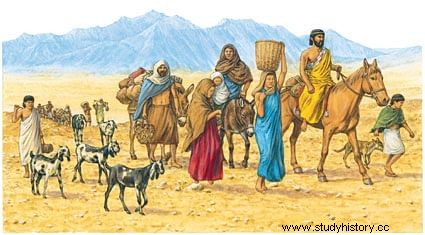
Aryans from Central Asia inhabited the land that once belonged to the early settlers, and lasted 1500 to 500 BCE. They spoke an Indo-European language, an early form of Sanskrit. Tribal and nomadic Aryans were tough, fierce and warlike, as well as determined to remain true to their tribal identity.
Started as small communities, they brought a religion based on the worship of gods and goddesses.
Also known as the Vedic people, the four sacred texts, the Vedas, followed. The Vedas provide an insight into their lives and beliefs.
A large part of India spread its culture and soon followed their beliefs within 1000 BCE. The Aryans saw the formation of different kingdoms at that time. They came with their philosophical beliefs and shared that happiness and salvation come from a person's morals and ethics. In addition, one's path should be based on their place in life, but should be right and good.
By sharing their faith, they brought with them the social caste system:
- Brahmins (priests, teachers and intellectuals).
- Kshatriyas (warriors, police and administrators).
- Vaishyas (farmers, merchants and businessmen).
- Shudras (craftsmen and workers).
As their tribal settlement spread across India, their civilization in culture and trade grew and flourished. As a result, this led to the creation of 16 major settlements across northern India:Anga, Assaka, Avanti, Chedi, Gandhara, Kamboja, Kasi, Kosala, Kuru, Machcha, Magadha, Malla, Panchala, Surasena, Vajji and Vatsa. P>
The changes in linguistics, culture and politics contributed to the end of an era. However, the Vedic age led to a complex change in society. Along with an abundance of agriculture, trade expanded. The written verbal traditions of the Aryans show the Vedic period as the heart of the rebirth of urban civilization.
In short, the Vedic age brought forth the ancient Indian civilization.
Dynasties of Ancient India
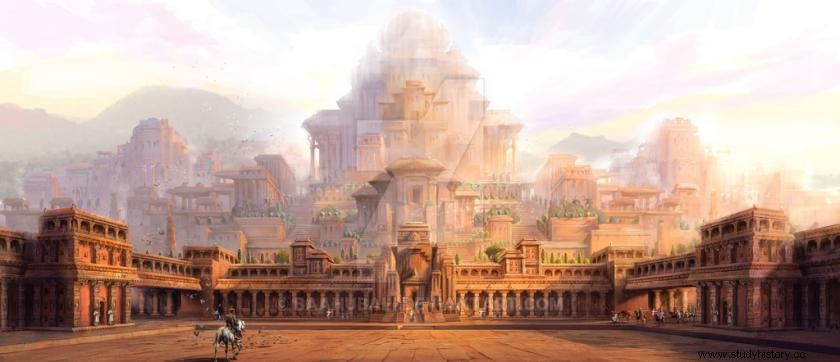
A total of 20 dynasties ruled through ancient India. Each contributed effectively to India's growth and prosperity. The focus is on those marked as the most important in ancient Indian history.
The 'Mahajanapadas', 16 great states that served as republics and kingdoms in the Vedic period. The kings ruled the majority. Others, known as desire or sanghas , were oligarchs. In an oligarchy, several men known as rajas shared power.
Magadha, Koshala, Vatsa and Avanti seemed the most powerful. In a battle for superiority, however, Magadha emerged as the most powerful. In addition to being rich in natural resources, iron ore created Magadha's weapons. Its jungles provided trees and elephants, which proved useful to their armies. Their fields grew enough crops to feed the people and the whole army.
Magadha became the first empire in India (544 - 322 BCE), with its growth seen through three dynasties. First, the Haryanka dynasty. Then the Shishunga Dynasty. Finally, the Nanda Dynasty.
After the Magadha Empire was the Mauryan Empire. Years later, the Gupta Empire developed into the golden age of ancient India.
Haryanka Dynasty
Three rulers ruled in the Haryanka dynasty between 544 and 412 BCE.
Bimbisara , founder of the Magadha Empire, ruled from 544 to 492 BCE The kingdom's borders expanded through marriage and conquest.
His first marriage to Kosala Devi, daughter of the Koshlan king, brought dowry to a koshi village. In addition, this calmed the hostility between the two rulers. The second marriage to Chellan, a Lichcchavi princess from Vaishali, gave him a son and secured the northern border. His third marriage to Khema, the daughter of a leader of the Madra clan in Punja, secured their alliance.
He expanded his territory by conquering Anga, placing his son as viceroy. After his continuous conquests and alliances, the Magadha empire grew large enough to accommodate 80,000 villages.
However, he was killed by his son, Ajatashatru , who later ascended to the throne.
Ajatashatru reign lasted between 492 and 460 BCE Following in his father's footsteps, he became an aggressive expansionist.
Although he was allied with Koshala, he wanted to conquer it, along with Kashi. This led to a war between the two rulers. Eventually, the war forced the Koshala king to give Ajatashatru's daughter peace. After that, the king of Kashi gave birth to his daughter.
Udayin succeeded his father from 460 to 444 BCE, and played an important role in the crossing between the Ganges and his son.
At this time, Magadha extended from the Himalayas (north) to Chotanagpur (south).
Just like his grandfather, his son killed him and ascended the throne. The patricid cycle continued and angered ordinary people. They lost faith in their leaders. As a result, ordinary people revolted and disposed of the last ruler of the dynasty.
Shortly afterwards, they ordered the most qualified official to be their leader, Shishunga, a viceroy of Kashi.
Shishunga Dynasty
The dynasty ruled the Magadha Empire from 412 to 344 BCE
Shishunga reigned from 413 to 395 BCE Destroying Avanti's power became his greatest military achievement and surpassed his predecessors. Therefore, the 100-year-old rivalry between Avanti and Magadha ended, which resulted in Avanti becoming part of the empire.
Kalasjoka , son of Shishunga, succeeded his father from 395 to 344 BCE He ruled just like his father, and maintained the empire as before. Little is known about his military achievements.
Although he had ten sons, he was the last ruler of the Shishunga dynasty.
His ten sons divided the kingdom among themselves instead of choosing a suitable brother. However, this empire weakened in recent years, leading to a rapid downfall.
Nanda Dynasty
The kings of the Nanda dynasty were the last to rule the Magadha empire from 344 to 322 BCE.
The dynasty reached new levels of power and superiority for Magadha. It grew in geographical breadth, wealth and military conquests.
Mahapadma Nanda was not only the first ruler of the dynasty, but the first non-Kshatriya ruler, from 344 to 319 BCE. After killing Kalashoka and becoming king, he proved to be the most powerful. He expanded the empire by conquering Kalinga.
Dhana Nanda , the last ruler of the Nanda dynasty, succeeded his father from 319 to 322 BCE The extent of his power proved to be so great that Alexander the Great did not dare to move near his territory. However, his power proved nothing against his unpopularity among the people. This unpopularity is a result of his anti-kshatriya policies, shudra origins, oppressive methods of collecting taxes, and poor governance of the kingdom's economy.
He proved to be a weak and lacking leader.
When faced with the threat of a possible foreign invasion, ordinary people looked to the king for a plan. His selfishness and arrogance led him to downplay those who advised him.
While living in denial, Chandragupta trained Maurya along with his guru, Chanakya. They worked on a plan to defeat the Magadha Empire. In addition, the death of Alexander the Great left a vacuum of power, which Chandragupta exploited.
Dhana was thrown on guard by the Mauryan attack, preparing its army for an unexpected war. Chandragupta led his small army to victory using his knowledge and military expertise.
The overthrow of Dhana Nanda led to the beginning of the Maurya government and the end of the Magadha empire.
Mauryan Kingdom
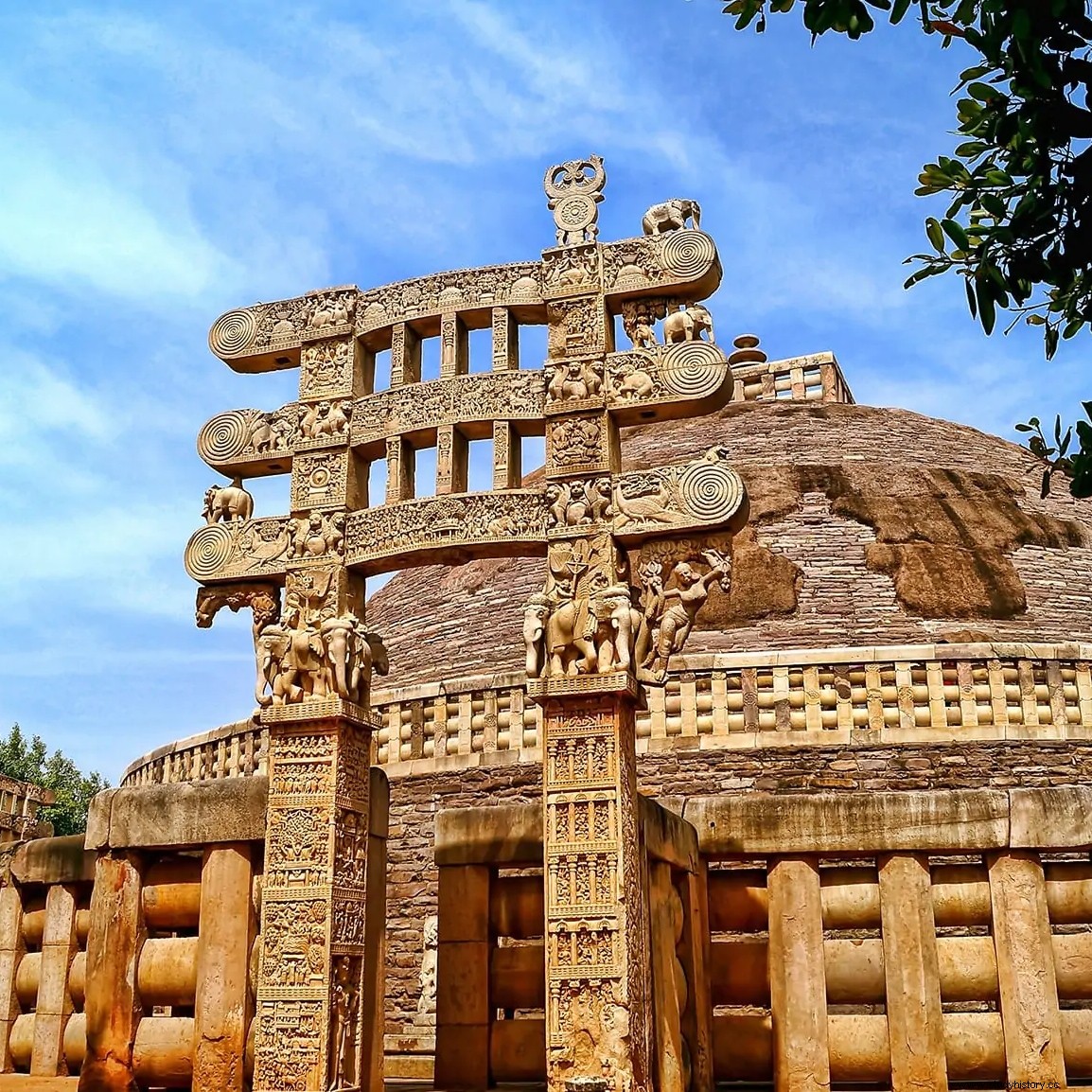
The Mauryan Empire, the first Indian empire, began in 321 BCE and ended in 185 BCE. It covered most of the Indian region:over central and northern India, as well as parts of Persia.
Chandra , elected king in 323 BCE, took several lands through power and entered into alliances.
Chanakya gave advice and contributed to the legacy of the empire. In addition to being a political strategist, he wrote Arthashastra. This focused on leadership and government, how a state should organize the economy while maintaining power.
The empire expanded to all 16 states.
Chanakya recommended a network of spies, a focused element of Arthashastra. They served as a surveillance force for the ruler. The focus on deception reflected their practical and pessimistic views of human nature.
Furthermore, the empire constructed extraordinary temples, libraries, palaces and a university. Their trading system grew impressively, while maintaining a strong state system and an army.
Bindusara succeeded his father around 300 BC, and peacefully maintained the lands as his father did.
After succeeding his father between 268 and 232 BCE Ashoka led a bloody battle against the kingdom of Kalinga. This struggle led him to reconsider his commitment to the expansion of the empire. Therefore, when he took a step towards non-violence, he turned to Buddhism.
His mark in history was the creation of pillars with his official decree on Buddhism. They promoted non-violence and living in peace with each other.
Unlike Ashoka and his predecessors, his successors failed to hold the empire. Eventually it broke apart. The public's unwillingness to follow Buddhism led to conflict throughout the Mauryan Empire.
The last in the series, Brihadratha , was assassinated by his commander-in-chief, Pushyamitra Shunga. Thus the Shunga dynasty rose.
The Gupta Empire
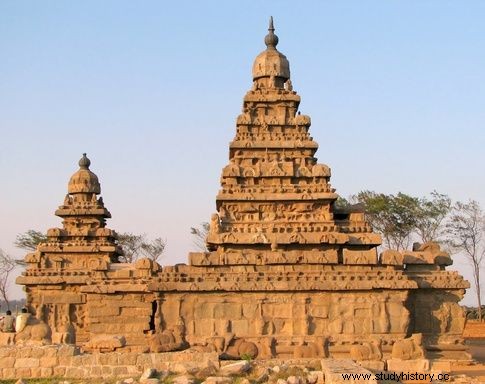
From 320 to 550 AD the Gupta Empire became known for its exquisite art, architecture, science, religions and philosophy.
The Gupta Empire, known as the 'Golden Age', was a period of prosperity and growth.
Not much is known about the early years. However, traveling Buddhists were reliable sources of information.
Under the rule of Sri Gupta (240 - 280 AD), the empire included only Magadha and part of Bengal. His son, Ghatotkacha , followed him and learned the benefits of maintaining an army.
Chandragupta I
Chandragupta I, son of Ghatotkacha, started with a rapid expansion of the empire. Established as the first sovereign ruler, his reign continued from 320 to 335 AD. Marrying the Lichcchavi princess, Dumaradevi, allowed him ownership of mines rich in iron ore. These mines met internal demand and became a valuable commodity.
Territorial heads for other parts of India surrendered to Chandragupta I, and saw the sovereign ruler as unparalleled.
Samudragupta
Samudragupta ruled from 335 to 375 AD. As a military genius, he continued the growth of the empire. He conquered the remaining territories of northern India and part of southern India.
From then on, India stretched from the Himalayas (north) to the mouth of the rivers Krishna and Godavari (south); from Balkh, Afghanistan (west) to the Brahmaputra River (east).
Chandragupta II
After Samudragupta's reign, there was a brief power struggle.
His eldest son, Ramagupta , became the next king. However, the Scythian king of Mathura overcame his power. When he saw the king's interest in his wife, Ramagupta gave his wife, Queen Dhruvadevi, to the Scythian kin to maintain peace.
Chandragupta II rescued Dhruvadevi and assassinated the Scythian king. After Dhruvadevi publicly condemned her husband, Chandragupta killed him. After being appointed king, he spent the first few years putting an end to the revolts among the subordinate rulers. Some time later he married Dhruvadevi.
As a capable and capable leader, he defeated the provincial governor of Saurashtra and extended his empire further to the shores of the Arabian Sea. He then earned the title, Vikramaditya, means emperor of ancient India. Throughout history, this progress is well known.
In other words, the Gupta Empire reached its peak.
The last sovereign ruler, Skandagupta , reigned from 455 to 467 AD. He prevented the invasion of the females. Unfortunately, after his death, the dynasty faced domestic conflicts. His successors failed to maintain the great empire, which resulted in a decline in law and order.
The Huns and foreign powers attacked them continuously and destroyed the economic well-being of the kingdom. The Huns' last attack in 550 CE ended what was left of the empire.
Ancient Indian Society
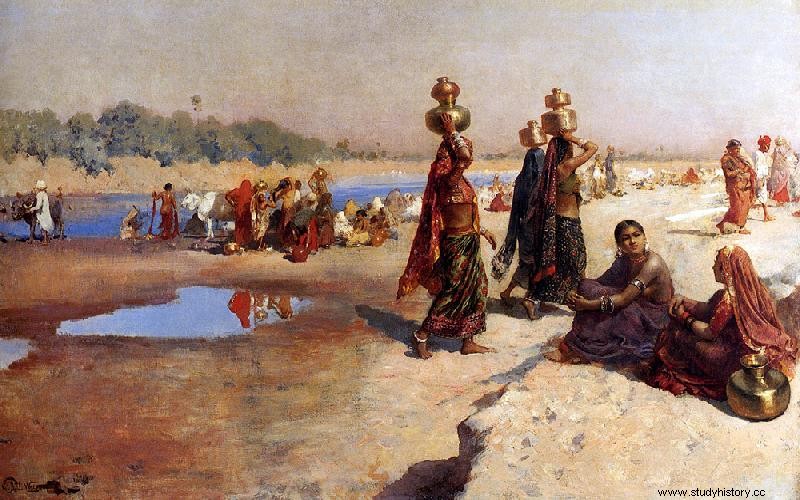
The society of ancient India divided into four varnas (social classes or castes), which give society order and structure. At first it seemed like a reflection of occupation. On the other hand, interpretations show that it was determined by one's birth.
There were no changes allowed in caste, as well as marriage outside one's own caste.
Brahmin in ancient India
The highest warning focused on the duties of priests, teachers, and intellectuals. Their tasks were centered around knowledge. First, they provided education and spiritual guidance. Second, they studied and taught the Vedas. Third, they performed and taught sacred rituals. Fourth, they developed ideal qualities. Among these ideal qualities are honesty, integrity, purity and austerity.
Together with Kshatriyas and Vaishyas, they are 'twice born'. They accepted the sacred thread (spiritual initiation) and performed certain rituals and rites of passage.
Kshatriyas in ancient India
Warriors, police and administrators were nobles, protectors of society. They showed the strength and character of the body, and made sure that the inhabitants performed their duties. In addition, they dealt uncompromisingly with crime and lawlessness. They conquered their own minds and senses.
Vaishyas in Ancient India
The productive class of farmers, merchants and businessmen protected animals (especially cows) and the land. They created wealth and prosperity, maintained food, clothing, etc., and acted ethically.
Shudras in ancient India
Craftsmen and workers, the only class that was allowed to accept the work of others. However, the three warnings above were professionally and financially self-sufficient.
They gave service to others and followed moral principles, they remained loyal and proud of their work.
The fifth and lowest warning, Chandala , handled jobs in the community that no one wanted to do. Also known as 'the untouchables', it is unclear if they were really mentioned in the caste system.
Ancient Indian literature
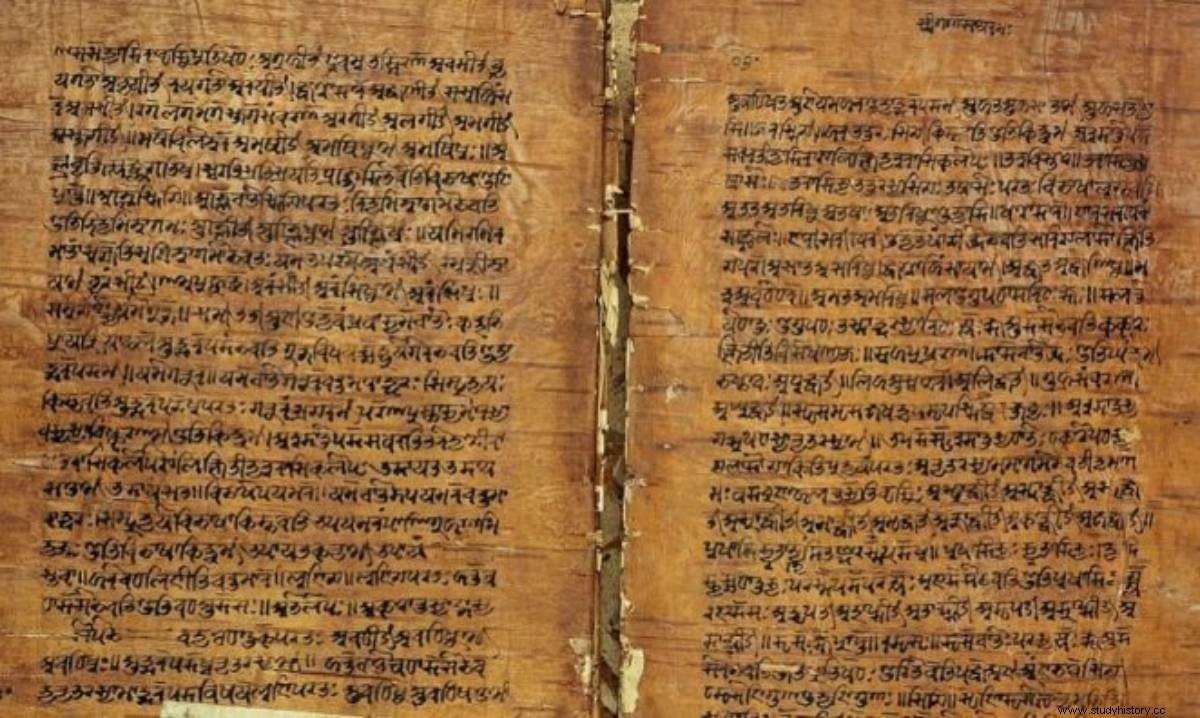
The Vedas
The earliest known work, Rig Veda , contains 1028 hymns in Vedic Sanskrit. Most of the preserved works are religious texts, but attention is focused on everything related to 'literature'. This includes epics and texts, dramatic and didactic poetry, narrative and scientific prose, and verbal poetry and songs.
Yajur Veda kept instructions for performing the rituals.
Same Veda prescribed songs for the recitation of the hymns.
Atora Veda prescribed rituals and rituals.
Ancient Indian philosophical literature
Brahmanas gave detailed explanations of Vedic literature.
Aryankas explains the rituals and enters into philosophical discussion about the Brahmanas. It has an overview of transitions between Brahman's ritualistic symbolism and the philosophical aspects of Upanishaden.
Upanishadene deal with the concepts of the origin, birth and death of the universe, as well as the material and spiritual world. This is written in poetry or prose, and is an expression of philosophical concepts.
The puranas helped with the development of the early Vedic religion Hinduism. They mean 'renewing the old', explaining philosophical and religious truths through legends and mythical stories.
Shastras contain works of philosophy and science, covering art, mathematics and other sciences. For example, Arthashastra is the science of governance.
Smritt focus on the performance of duties, customs and laws under Dharma.
In Early Buddhist Literature, Suta Pitaka includes dialogues between the Buddha and his followers. Vinaya Pitaka has the organizational rules for the monasteries.
The Great Epics
Among the great epics is Ramayana and Mahabharata . They keep the memory of ancient Indians. Until the 2nd century BCE, they were either sung or told by storytellers before they were finally written.
The Ramayana contains 2400 verses in seven books, the Khandos . It is written in poetry and tells the story of Rama and how to achieve the four goals of human life:
- Dharma - righteous behavior or religion.
- Artha - the attainment of worldly wealth and prosperity.
- Kama - fulfillment of desires.
- Maliska - the ultimate liberation.
The Mahabharata contains 100,000 XNUMX verses in ten books, making it the longest poem in the world. Considered a mythical story, it mentions events that will always happen and repeat themselves.
Art and architecture in ancient India
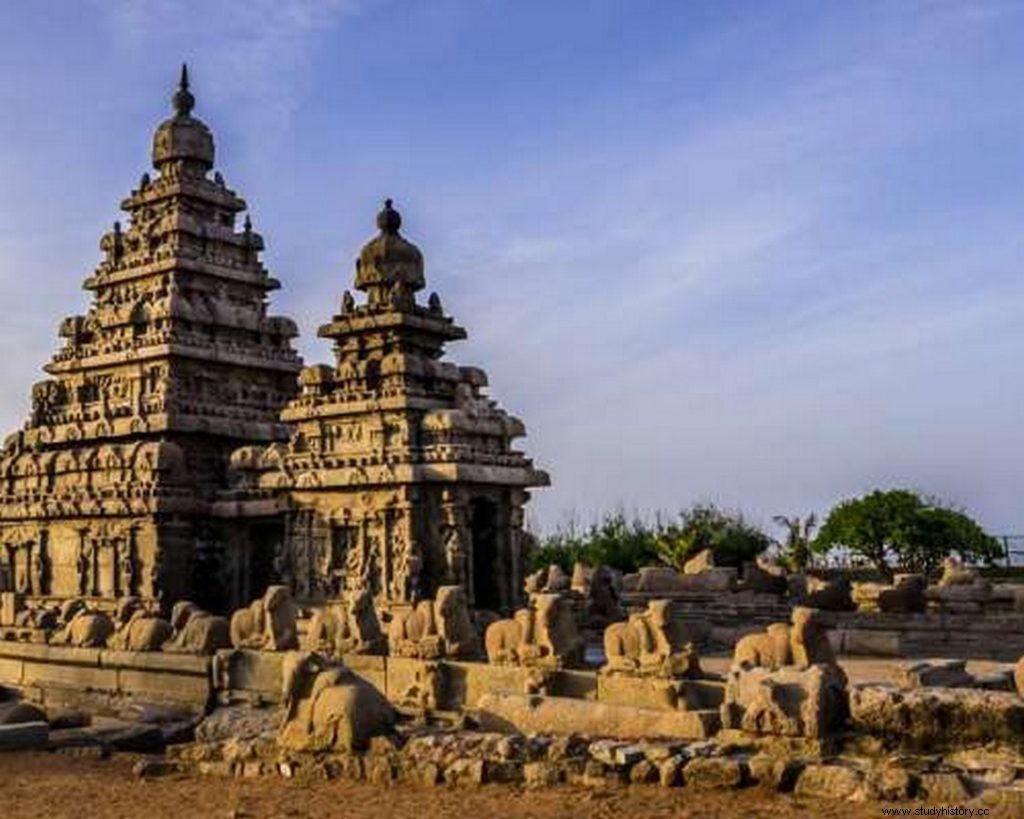
Ancient Indian architecture
Evidence of planned cities in Harappan indicates highly developed architecture.
During the Vedic period, fire altars, along with mathematical and astronomical significance, played a role in the development of temple architecture. The development of rock caves soon followed, evolving to suit social and religious contexts and regional differences.
Originally, Buddhism led to the spread of temples. Later it was adopted into Hinduism.
Ancient Indian Art
Ancient Indian art begins in prehistoric times, with cave paintings depicting various events of that time.
Paintings and sculptures developed, transforming folk and tribal art traditions. It represented people who belonged to different cultural and social groups in ancient India. A depiction of their lives synchronized with nature, how they connect with natural energy, is shown.
Through many years of study, art shows their freedom from prejudice in the depiction of myths, legends and gods out of dreams and fantasies.
Mathematics and Science in Ancient India
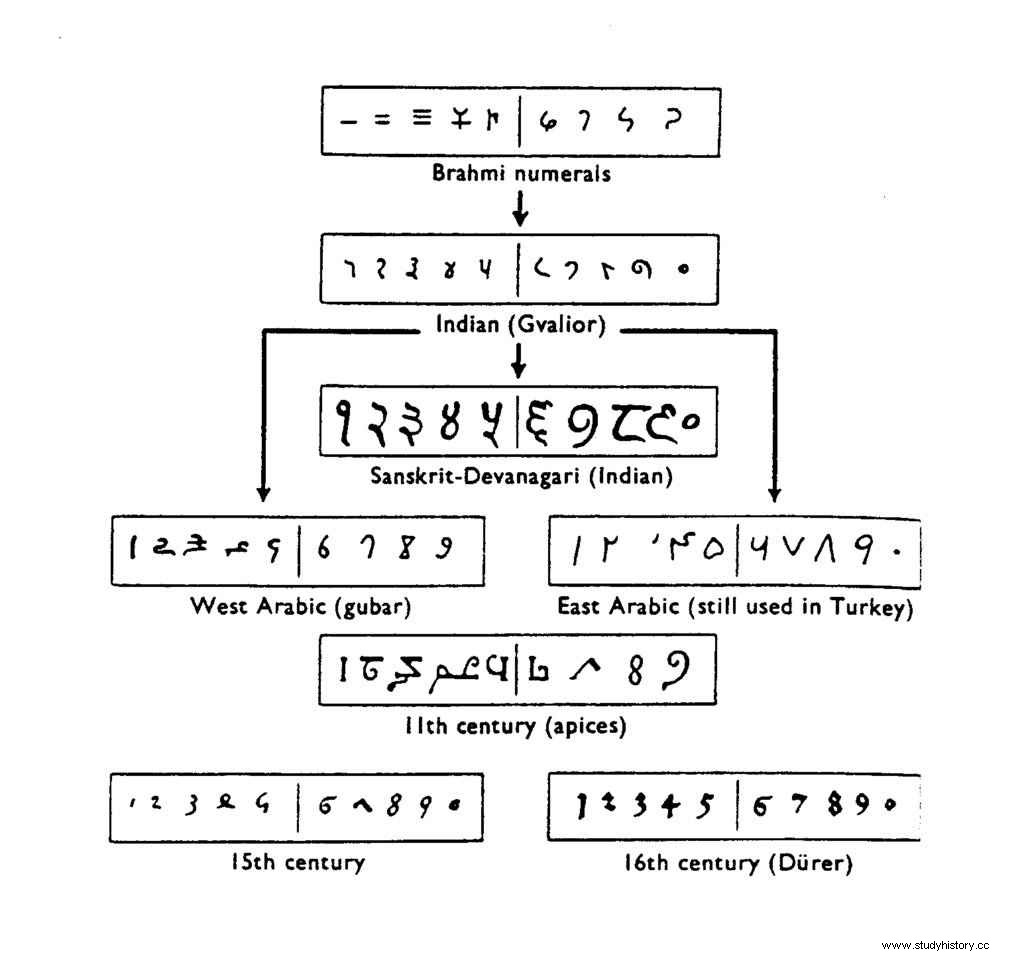
Ancient Indian finds show a solid connection between science and religion.
In astronomy, planets were considered gods, which resulted in close observation of their movements. In addition, this was also due to their connection to changes in seasons and weather.
In the science of grammar and linguistics, the Brahmanas emphasized that Vedic prayers and mantras must be recited with precision and accuracy.
Around the 3rd century BC, mathematics, astronomy and medicine developed differently.
Ancient Indian mathematics made three contributions:the notional system, the decimal system, and the use of zero. The introduction of zero led to a higher level of study in mathematical mechanics.
Above all, Brahmin numbers served as the basis for modern, Indian or Hindu and Arabic number systems used today.
The Legacy of Ancient India
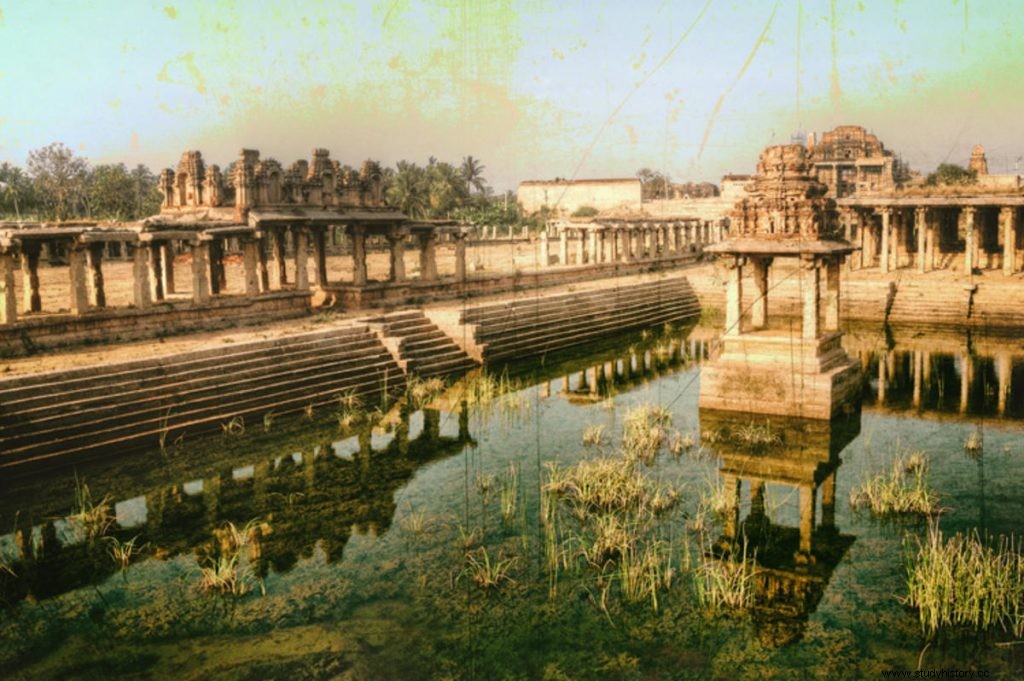
For centuries, the culture and religions of ancient India have influenced the world. Not only did religions gain followers, but philosophical practice influenced many. Hinduism and Buddhism are two of the world's largest religions. Indian literature, architecture and art-shaped cultures, which influenced the respective fields to this day, with inspiring stories told. They strongly influenced the world, seen from the many translations of Bhagavadgita . People from other religions meditate and practice yoga. It proves the legacy of old practice, and welcomes anyone who chooses to follow the steps of self-realization.
Events that occurred years after ancient India prove its living heritage. Mohandas Gandhi used non-violence against British rule in the 20th century. Inspired, Martin Luther led King Jr. non-violent protests for the rights of African Americans in the 1950s and 1960s. In northwestern India, the styles combined Greek and Persian with ancient Indians, resulting in Gandhara culture. These rich mergers demonstrate the ongoing development of India.
The practice brings self-reflection to the individual, including some of the most powerful people in the world, and continues their growth and self-awareness.
"To keep the mind and nature free of impurities, build a cabin in your garden for critics and keep it closed."
- Kabi
